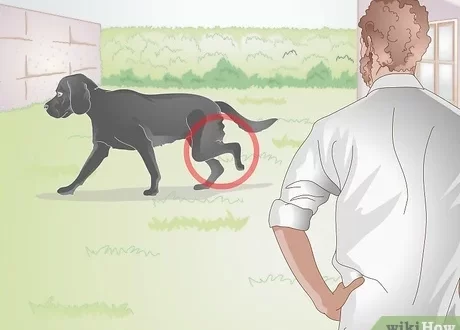
Misconceptions of the “doggy translator”
Although the science of animal behavior is advancing by leaps and bounds, unfortunately, there are still “specialists” who do not want to learn and hold views on dog training that were acceptable only during the time of the Inquisition. One of these “specialists” is the so-called “doggy translator” Caesar Millan.

Contents
What is wrong with the “doggy translator”?
All clients and fans of Caesar Millan have two things in common: they love their dogs and know nothing about education and training. Indeed, an ill-mannered dog can be a serious test and even a danger. And it is natural that people who are faced with difficulties are looking for help in order to live in harmony with their pet. But, alas, “help” can sometimes turn into an even greater disaster for inexperienced customers.
It is only natural that people who have no idea about the behavior of animals, seeing Caesar Millan on the National Geographic channel, are delighted. However, National Geographic is sometimes wrong.
There are many reasons why people become fans of Caesar Millan. He is charismatic, exudes confidence, always “knows” what to do, and more importantly, solves problems quickly. And this is what many owners are looking for – the “magic button”. To the inexperienced viewer, it seems like magic.
But anyone with the slightest idea of animal behavior will immediately tell you: he is delusional.
Caesar Millan preaches the principles of dominance and submission. He even created his own labels to label “problem” dogs: a dog from the red zone is an aggressive dog, calmly submissive – that’s how a good dog should be, and so on. In his book, he talks about 2 reasons for dog aggression: “dominant aggression” – they say that the dog is a “natural leader” who was not “dominated” properly by the owner and therefore became aggressive in an attempt to seize the throne. Another type of aggression he calls “fear aggression” is when a dog behaves aggressively in an attempt to avoid things it doesn’t like. And for both problems, he has one “cure” – dominance.
He argues that most problem dogs “just don’t respect their owners” and haven’t been properly disciplined. He accuses people of humanizing dogs – and this, on the one hand, is fair, but on the other hand, he himself is categorically wrong. All competent dog behaviorists will tell you that his attitudes are wrong and explain why.
Most of Millan’s theories are supposedly based on the life of wolves “in the wild”. The problem is that before 1975, wolves were so actively exterminated that it was very problematic to study them in the wild. They were studied in captivity, where there were “prefabricated flocks” in a limited area. That is, in fact, these were high-security prisons. And therefore, to say that the behavior of wolves in such conditions at least resembles natural, to put it mildly, is not entirely correct. In fact, later studies conducted in the wild actually showed that a pack of wolves is a family, and relationships between individuals develop accordingly, based on personal connections and the distribution of roles.
The second problem is that a pack of dogs is very different in structure from a pack of wolves. However, we have already written about this.
And the dogs themselves, in the process of domestication, began to differ quite a lot in behavior from wolves.
But if a dog is no longer a wolf, then why are we recommended to treat them like dangerous wild animals that need to be “cut down and brought down”?
Why is it worth using other methods of training and correcting the behavior of dogs?
Punishment and the so-called “immersion” method are not ways to correct behavior. Such methods can only suppress the behavior – but temporarily. Because nothing is taught to a dog. And sooner or later, the problem behavior will reappear—sometimes even more forcefully. At the same time, a dog that has learned that the owner is dangerous and unpredictable loses confidence, and the owner experiences more and more difficulties in raising and training the pet.
A dog can “misbehave” for several reasons. She may not feel well, you may have taught the pet (even if unwittingly) “bad” behavior, the dog may have a negative experience associated with this or that situation, the animal may be poorly socialized … But none of these reasons is “ treated” by dominance.
Other, more effective and humane training methods have long been developed, based precisely on scientific studies of dog behavior. Having nothing to do with the “struggle for dominance.” In addition, methods based on physical violence are simply dangerous for both the owner and others, because they form aggression (or, if you’re lucky (not the dog), learned helplessness) and are expensive in the long run. .
It is possible to teach a dog any skills necessary for a normal life, solely with the use of encouragement. Unless, of course, you are not too lazy to form a dog’s motivation and desire to interact with you – but this is much easier to do than many people think.
Many well-known and respected dog training professionals such as Ian Dunbar, Karen Pryor, Pat Miller, Dr. Nicholas Dodman and Dr. Suzanne Hetts has been a vocal critic of Caesar Millan’s methods. In fact, there is not a single real professional in this field who would support such methods. And most directly warn that their use causes direct harm and poses a danger to both the dog and the owner.
What else can you read on this topic?
Blauvelt, R. “Dog Whisperer Training Approach More Harmful Than Helpful.” Companion Animal News. Fall 2006. 23; 3, pages 1-2. Print.
Kerkhove, Wendy van. “A Fresh Look at the Wolf-Pack Theory of Companion Animal Dog Social Behavior” Journal of Applied Animal Welfare Science; 2004, Vol. 7 Issue 4, p279-285, 7p.
Luescher, Andrew. “Letter to National Geographic Concerning ‘The Dog Whisperer.’” Weblog Entry. Urban Dawgs. Accessed on Novermber 6, 2010. (http://www.urbandawgs.com/luescher_millan.html)
Mech, L. David. “Alpha status, dominance, and division of labor in wolf packs.” Canadian Journal of Zoology 77:1196-1203. Jamestown, ND. 1999.
Mech, L. David. “Whatever Happened to the Term Alpha Wolf?” Weblog Entry. 4 Paws Univeristy. Accessed on October 16, 2010. (http://4pawsu.com/alphawolf.pdf)
Meyer, E. Kathryn; Ciribassi, John; Sueda, Kari; Krause, Karen; Morgan, Kelly; Parthasarathy, Valli; Yin, Sophia; Bergman, Laurie.” AVSAB Letter the Merial.” June 10, 2009.
Semyonova, A. “The social organization of the domestic dog; a longitudinal study of domestic canine behavior and the ontogeny of domestic canine social systems.” The Carriage House Foundation, The Hague, 2003. 38 Pages. Print.





